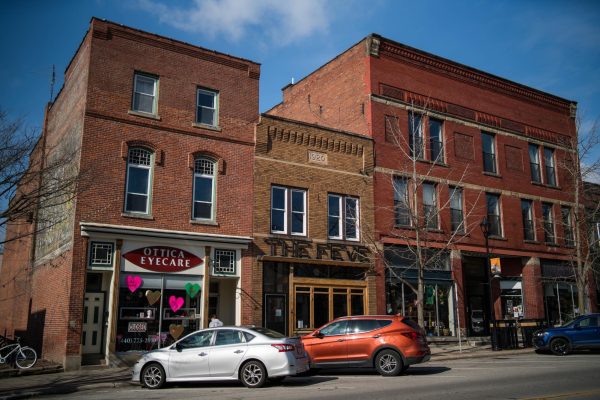Community Concerned About College Potentially Using Eastwood Elementary Building
On Monday, Oberlin City Council held a hearing to discuss the rezoning of Eastwood Elementary School property to allow for an exchange of land with the College. At the meeting, community members raised concerns about the transfer of publicly funded property to a private institution.
In the last week of March, the Oberlin Planning Commission unanimously voted 5–0 to recommend that the Council rezone the two-acre property containing the school as a Two-Family Dwelling District so that it can be used as office, classroom, and storage space. The area’s current zoning as a Single-Family Dwelling District prohibits these usages. If City Council approves the recommendation, the College would exchange some of the land it owns surrounding the elementary school for the land containing the school.
“Our main purpose for potentially obtaining Eastwood is for administrative swing space (temporary working space) and temporary storage needed while facilities are being renovated and converted,” Oberlin College’s Chief Facilities Officer Kevin Brown wrote in an email to the Review.
Eastwood Elementary has remained vacant since the opening of Oberlin’s new elementary school in October. Because unoccupied buildings decay quickly, the commission considered that the College’s use of the building might prevent deterioration.
“[The planning commission] looked at questions like the need for the building to be occupied and maintained, and it’s clear from our current zoning regulations that the current zoning … would not allow the kind of usage that the College has in mind,” said Ray English, Council liaison to the Planning Commission.
During Monday’s hearing, Liz Burgess, a senior resident of Oberlin, spoke on behalf of the Oberlin Community Land Trust. The OCLT emerged after a 2017 study revealed that Oberlin had a deficiency in low-income housing and housing for middle-income seniors. The group advocates for affordable housing in Oberlin and had hoped that the City could establish affordable housing in the Eastwood Elementary facility.
“The College acquires flexible space while they renovate buildings,” said Burgess at the hearing. “[This would be] mutually beneficial and sensible. However, we feel it is important that the Council consider the longer- term needs of the Oberlin taxpayers who invested in that property.”
The OCLT needs time to develop concrete plans regarding expanding affordable housing. As such, the proposed rezoning would allow the College to maintain the space while the City creates more permanent plans.
However, if the Council accepts the rezoning recommendation, community members want assurance that the College will not use the space indefinitely.
“Rightfully, people are saying we shouldn’t be waiting 10 years if the school is one of the viable options to add to housing,” said CEO of the OCLT Barbara Thomas. “I would be hopeful that the College can condense its work … but I think [the amount of time the College can use the building] should be more concise: under, rather than up to, 10 years.”
Although the City cannot officially limit the College’s time in the space, Burgess proposed that if the Council accepts the recommendation to rezone, the College must sign a written agreement to enforce the promise of short- term use. This suggestion garnered approval from many of the hearing’s attendants.
Because the proposal could go through multiple readings before its passage or rejection, if passed, the rezoning might not be finalized until June or July. However, the Council has the ability to skip some steps and speed up the process. According to English, he is committed to hearing community voices surrounding the rezoning and making a decision that the community supports.
“I want the community to feel good about what’s happening with Eastwood in the short and longer term,” said English. “This will be an ongoing community discussion. I thought it got off to a good start [at the hearing].”
Separately, renovations associated with the Sustainable Infrastructure Program, which have caused the College to need more space, will continue to progress. According to Brown, construction is currently in its second of four or five phases. The project’s first phase was completed over the summer on the south side of campus.
“We will be closing W. Lorain Street over the next two weeks to make the connections to our Central Plant,” Brown wrote. “Eventually, over the next two to three years, the majority of our facilities will be linked to the geothermal energy system.”







